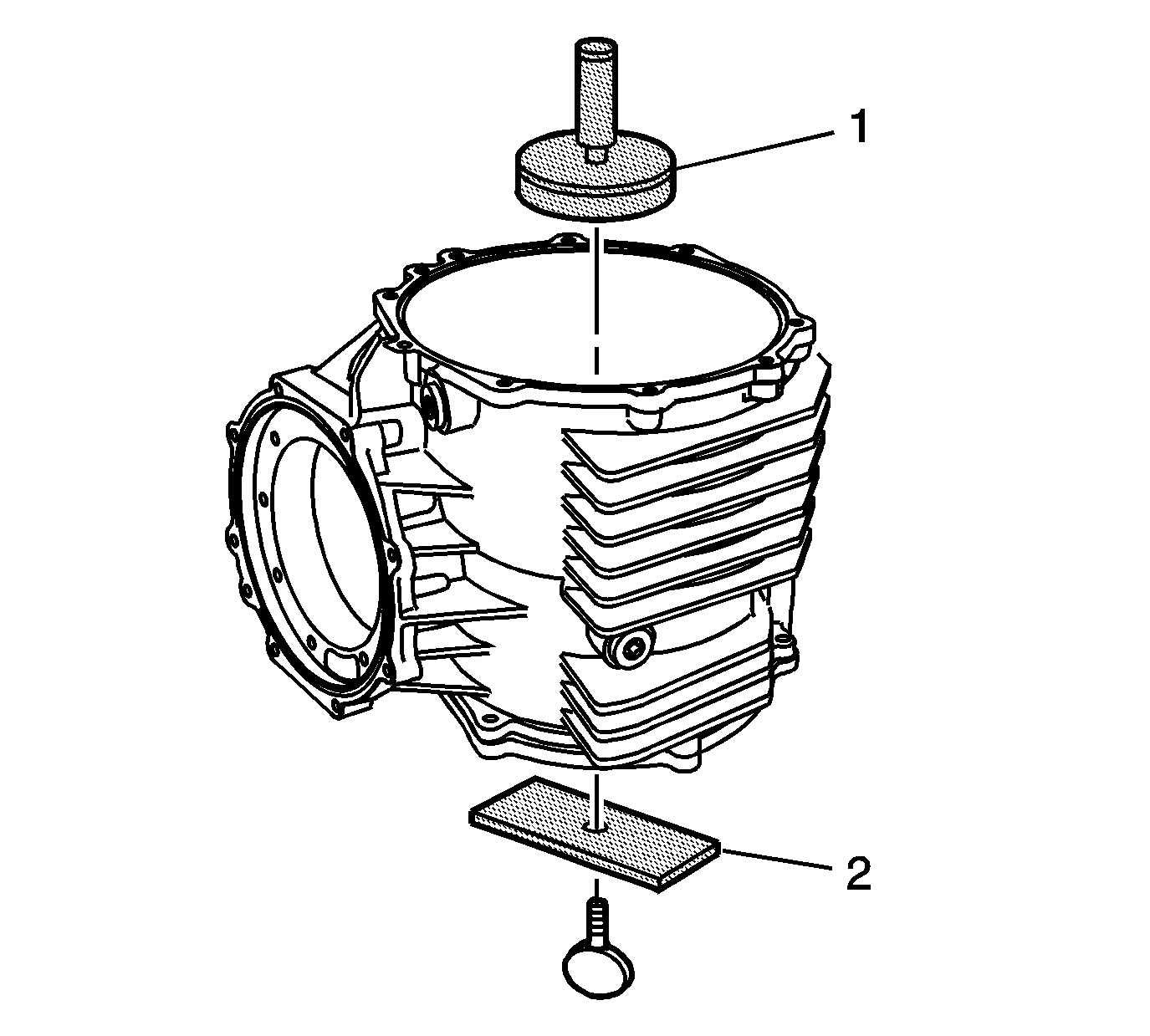
- Remove the
J 42168-9
(2) and thumbscrew from the
J 42168-1
(1).
- Remove the
J 42168-1
(1) from the left bearing cup bore of the differential housing.
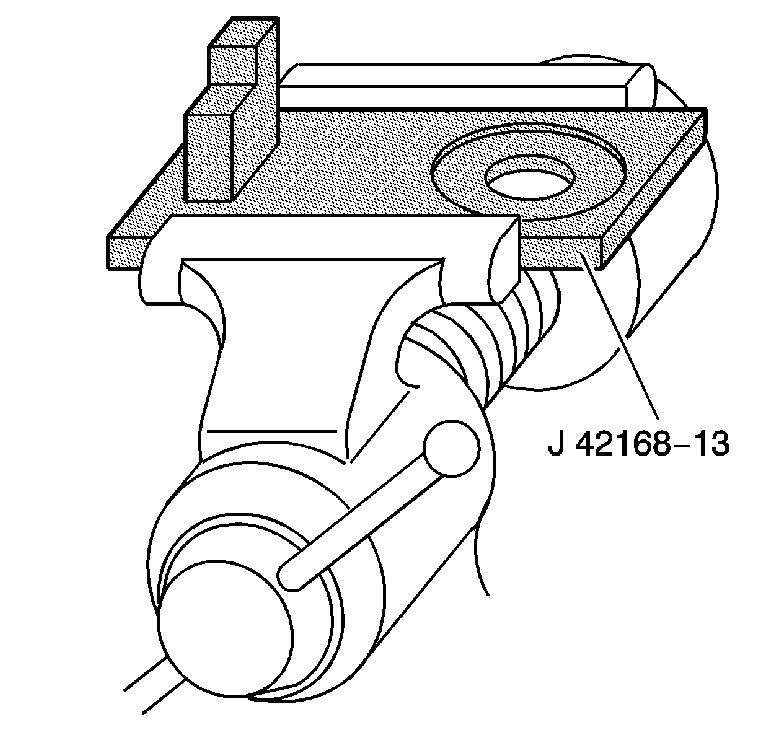
Important: Level the tool in order to obtain accurate measurements.
- Install the
J 42168-13
into a vice.
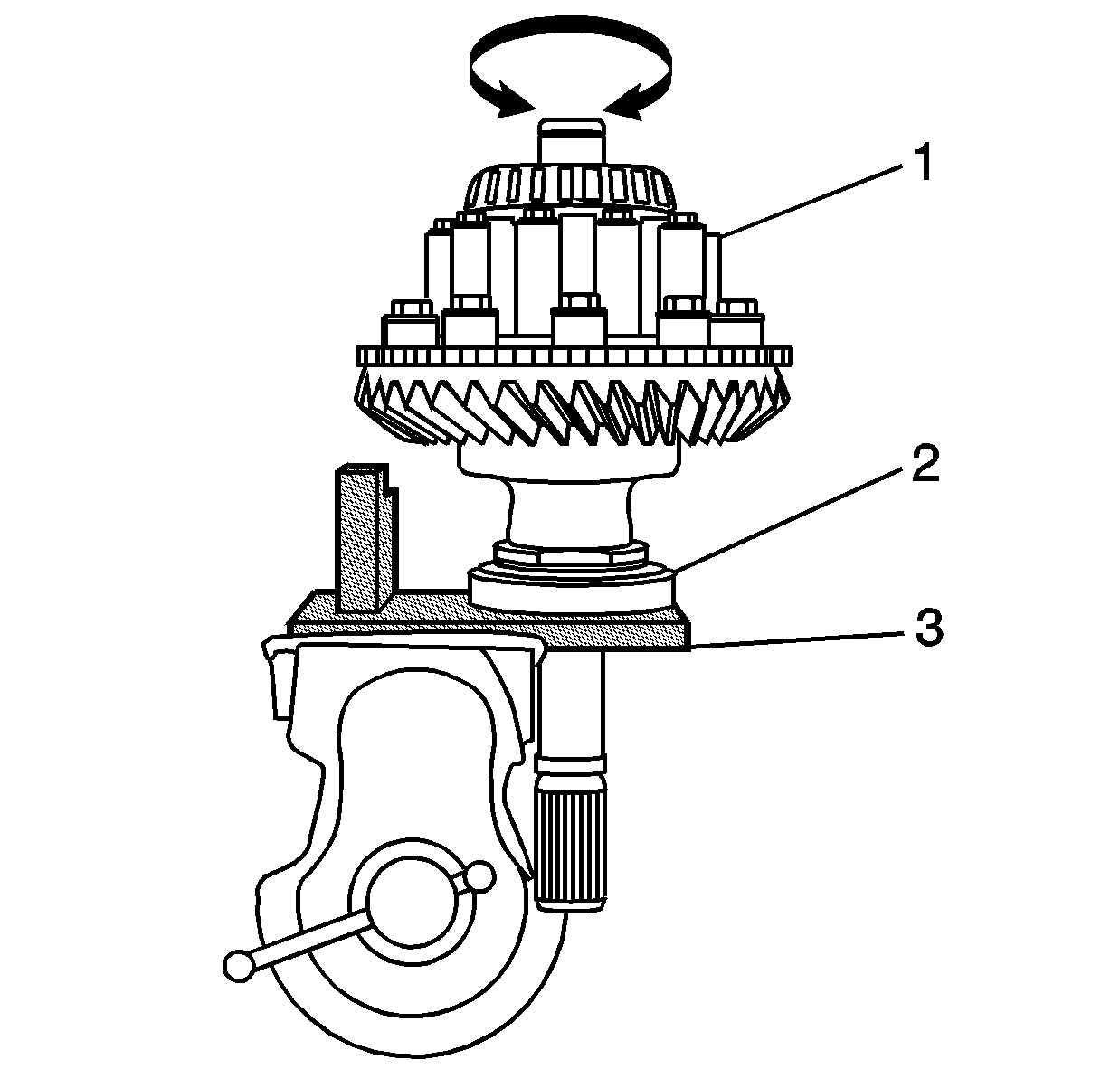
- Position the bearing cup (2) onto the
J 42168-13
(3).
- Position the differential case (1) onto the
J 42168-13
(3) and into the bearing cup (2). Rotate the differential, in both directions, in order to seat the bearing to the race.

- Install the
J 42168-7
(2) into the hole in
J 42168-2
(1). Loosen the thumbscrew and allow the rod to contact the bottom of the bearing race bore, machined surface (3).
- Tighten the thumbscrew.
- Remove the
J 42168-7
(2) from the
J 42168-2
(1).
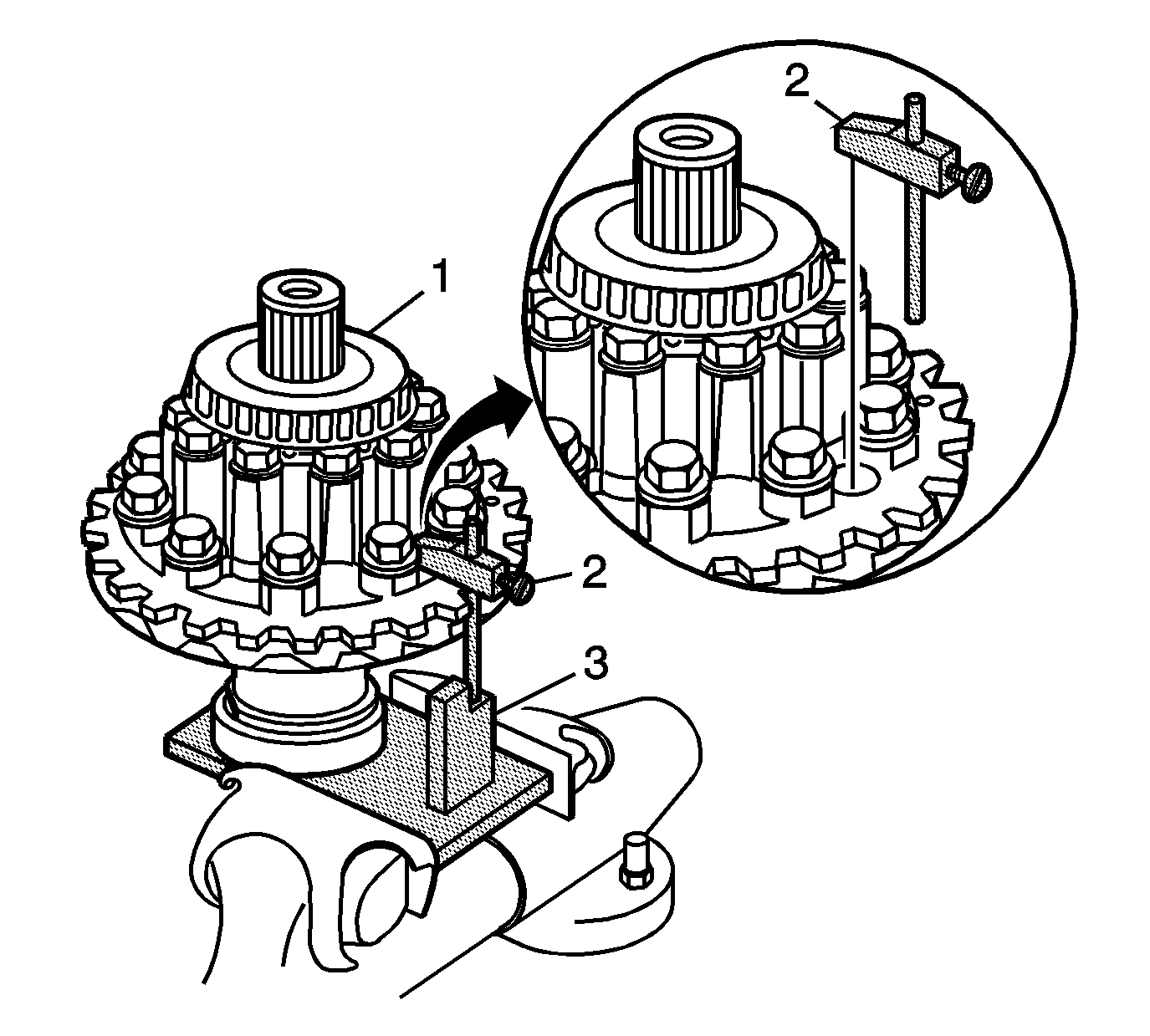
- Install the
J 42168-7
(2) into one of the two oil passages of the differential (1).
The tapered portion of the tool will wedge and be retained into the differential.
- Rotate the differential until the rod of
J 42168-7
(2) is above the
J 42168-13
(3) gage block.
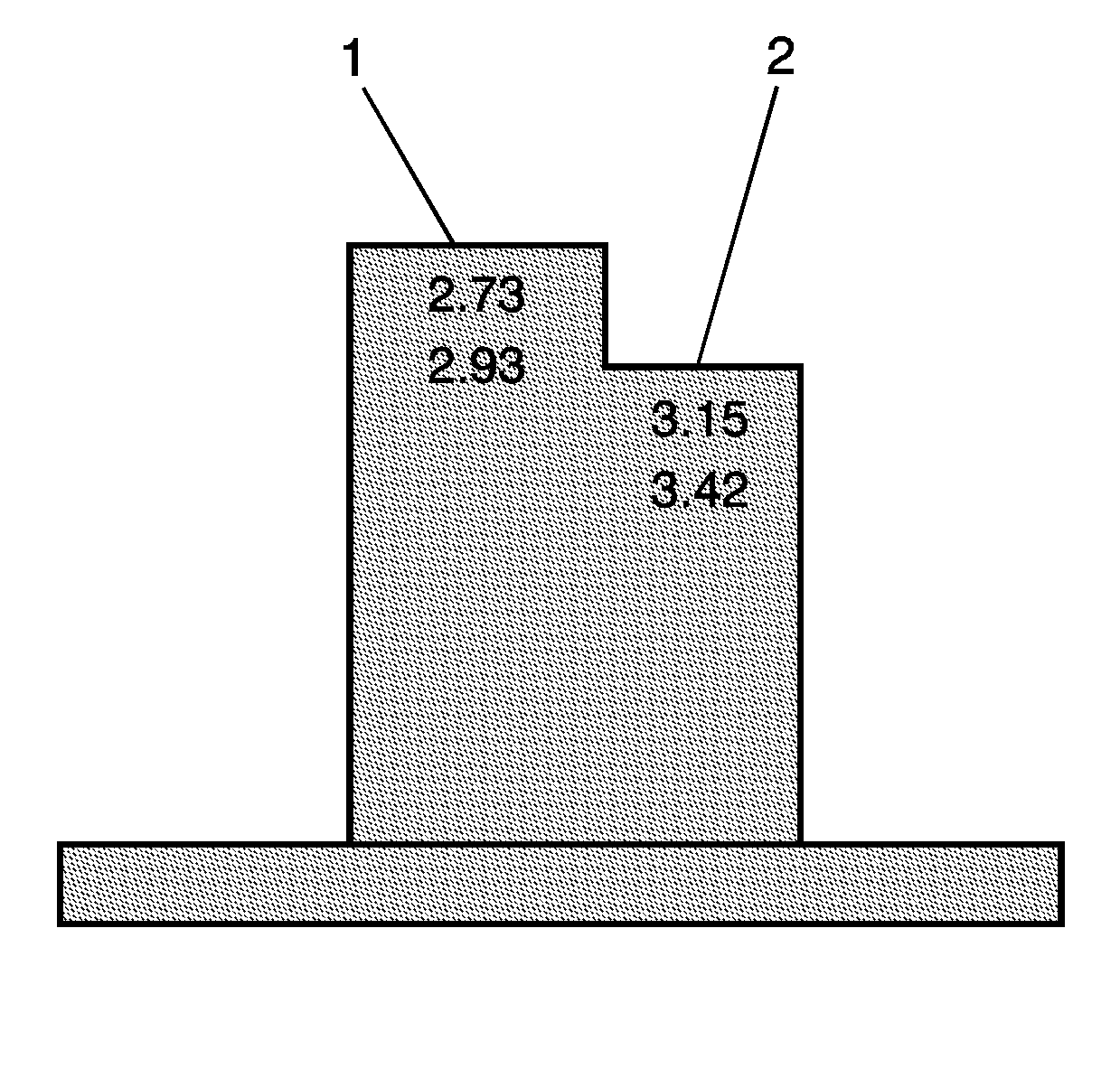
- The
J 42168-13
upper gage
block location (1) is used when servicing 2.73 ratio differentials. The lower gage block location (2) is used when servicing the 3.15 and 3.42 ratio differentials.
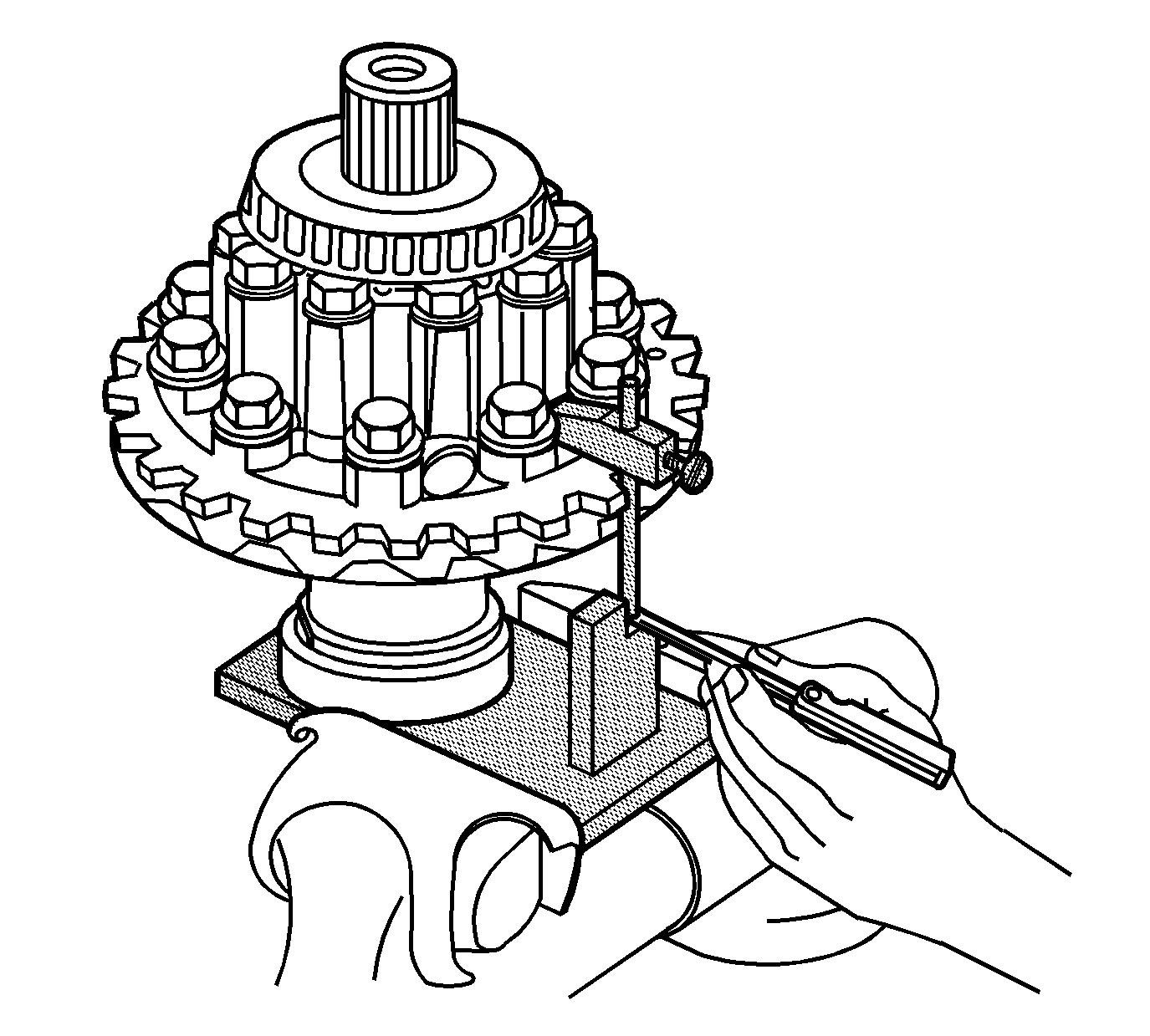
- Using a feeler gage, measure the distance between the rod of
J 42168-7
and the gage block of
J 42168-13
. Record the measurement as dimension C1.
- Subtract C1 value from a C nominal value of 5 mm (0.197 in). Record that calculation as C2.
Refer to the applicable calculation table in
Spacer and Shim Specifications
.
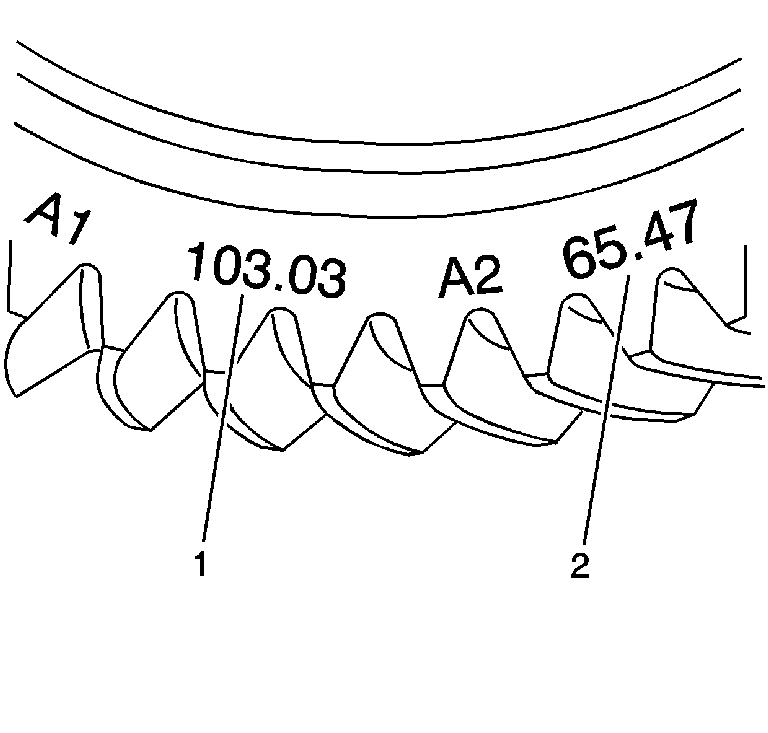
- Locate the A2 value (2) on the side of the ring gear.
Important: The A2 value is a manufacturing variation between the ring gear and pinion. The A2 value may be higher, lower, or equal to 65.5 mm (2.58 in), 3.15 and 3.42 ratio differentials, or 74.5 mm (2.93 in),
2.73 ratio differential, nominal value. When subtracting the D nominal value from the A2 value, the C3 calculation may compute to a positive, negative, or zero total.
- Subtract the D nominal value of either 65.5 mm (2.58 in) or 74.5 mm (2.93 in) from the A2 value. Record the calculation as C3.
- Add the C2 value to the C3 value for the proper left side differential bearing shim thickness. The C3 value may be a positive, negative, or zero value.
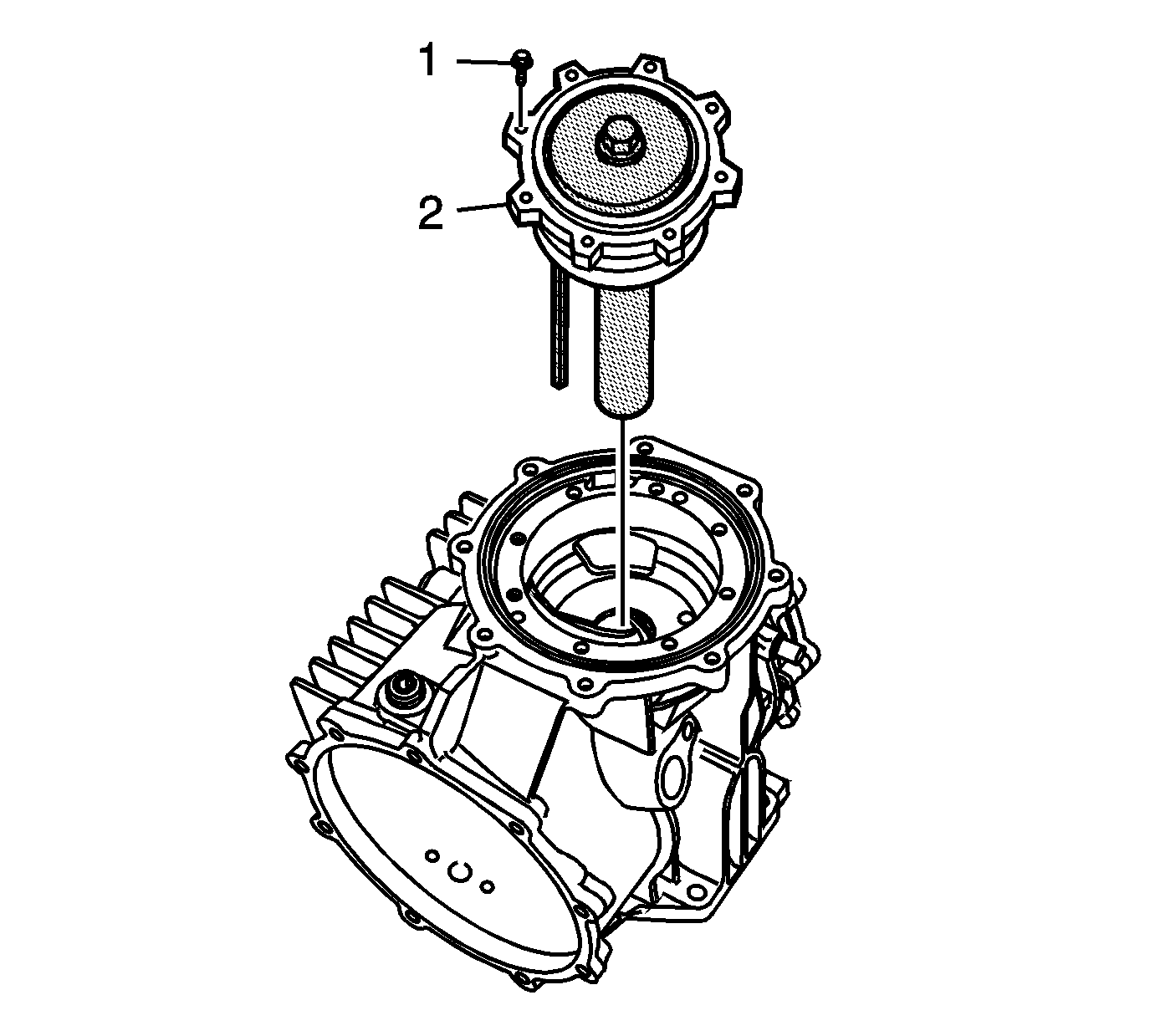
- Select shims equal to the calculated
value. It may be necessary to round the shim or shims total to obtain the proper shim sizes. If the shim thickness calculation is past the midpoint value, round the number to the next decimal value. Refer to
Rear Axle Specifications
.
- Remove the pinion housing/cage bolts (1).
- Remove the pinion housing/cage (2) from the differential.
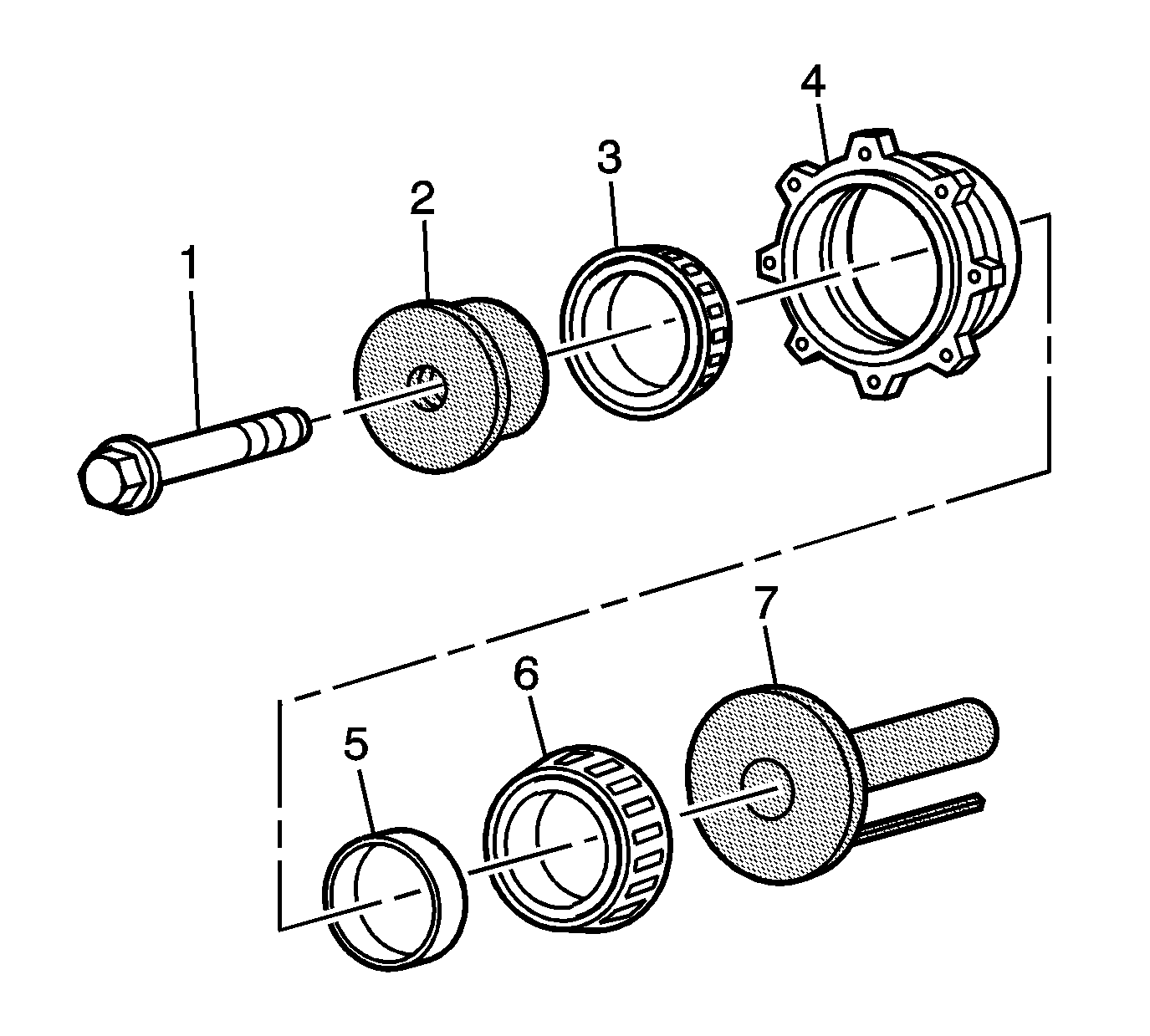
- Remove the
J 42168-11
, bearings (3 and 6),
spacer (5), and
J 42168-2
(7) from the pinion housing/cage (4).

- Use the
J 42170
and a hydraulic press in order to install
the selected shim (1) and bearing race (2) to the differential housing.
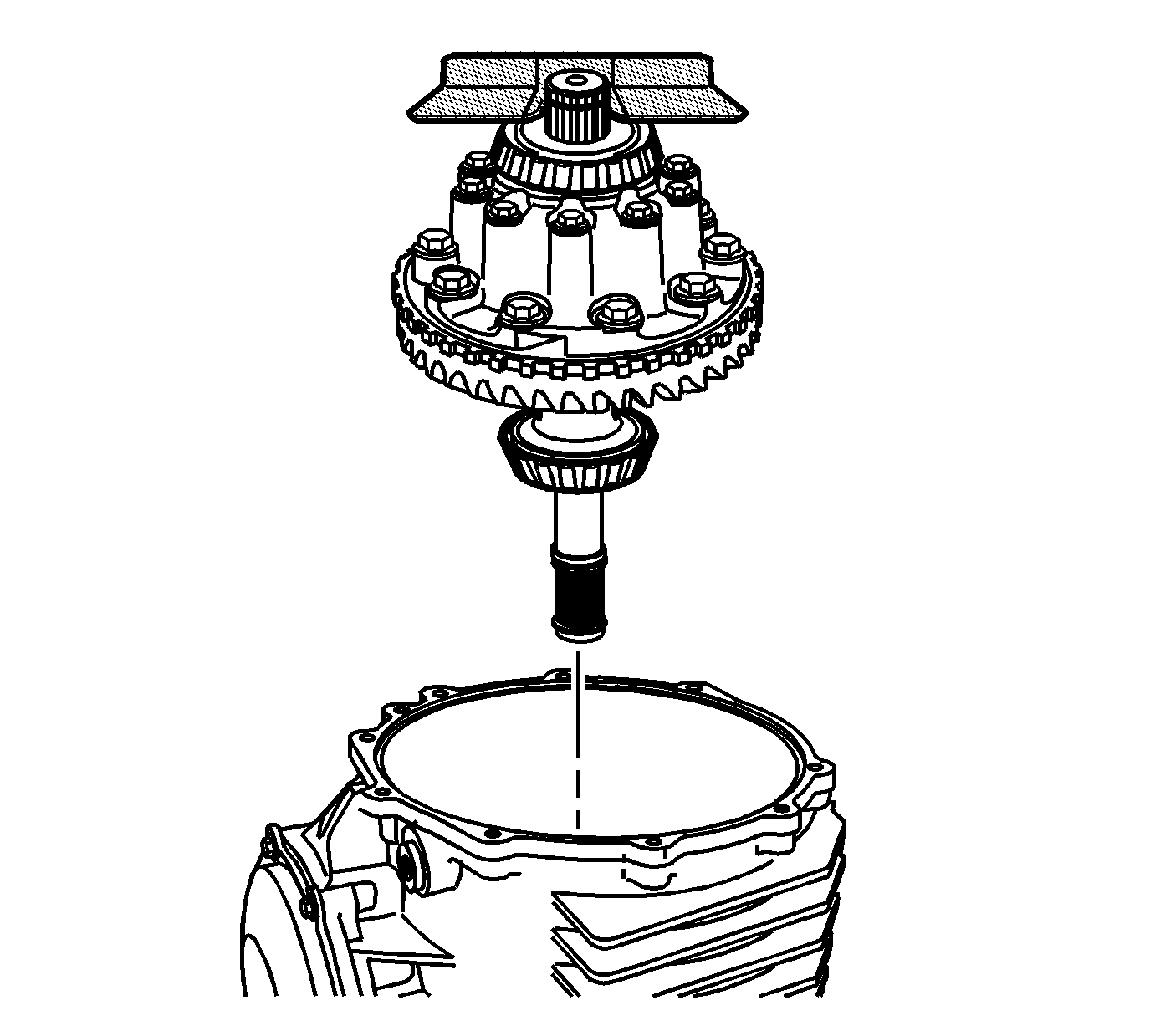
- Use the
J 42155
in order to install the differential
case into the differential housing.
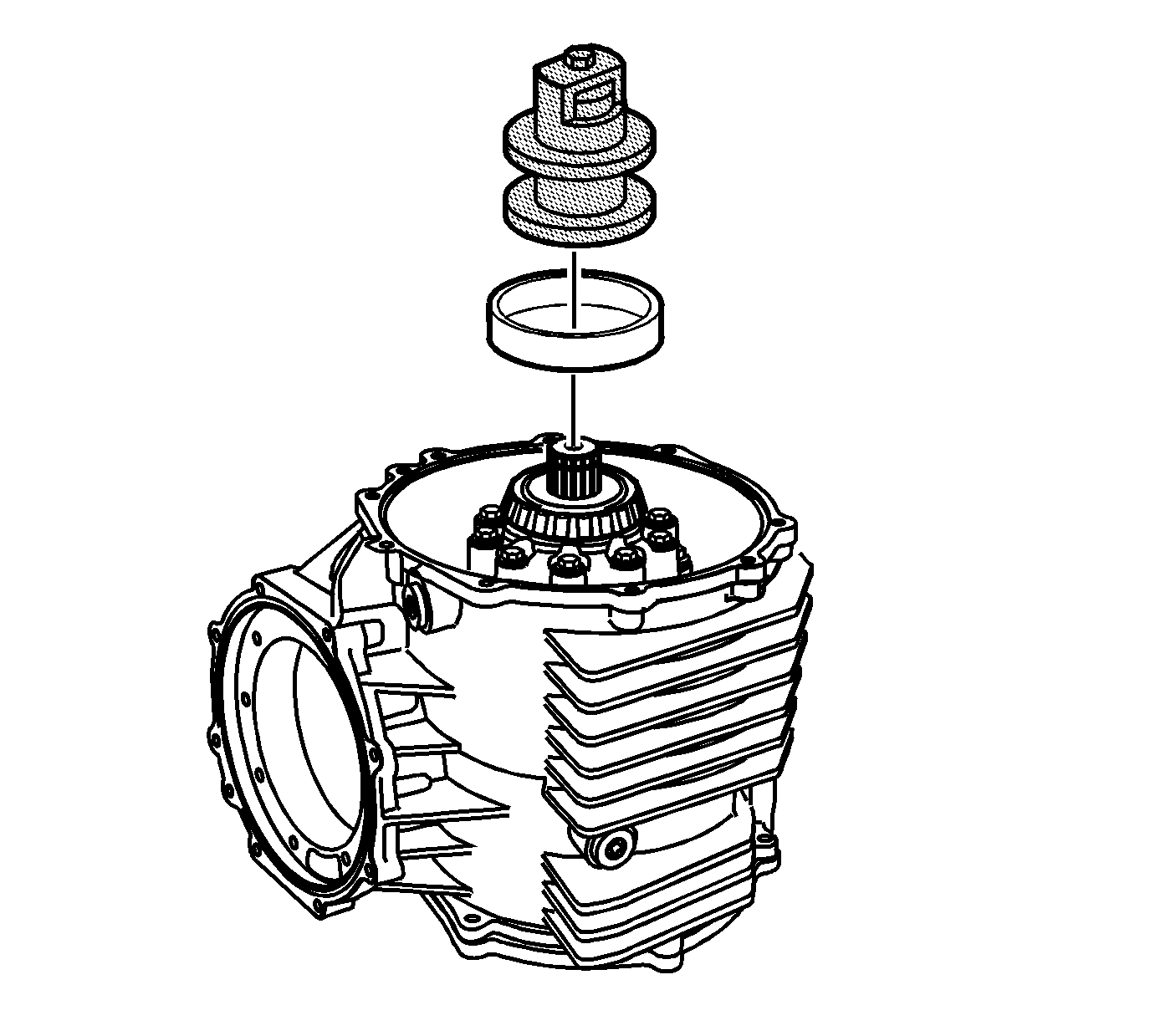
- Install the right side bearing cup, and the
J 42168-15
onto the differential.
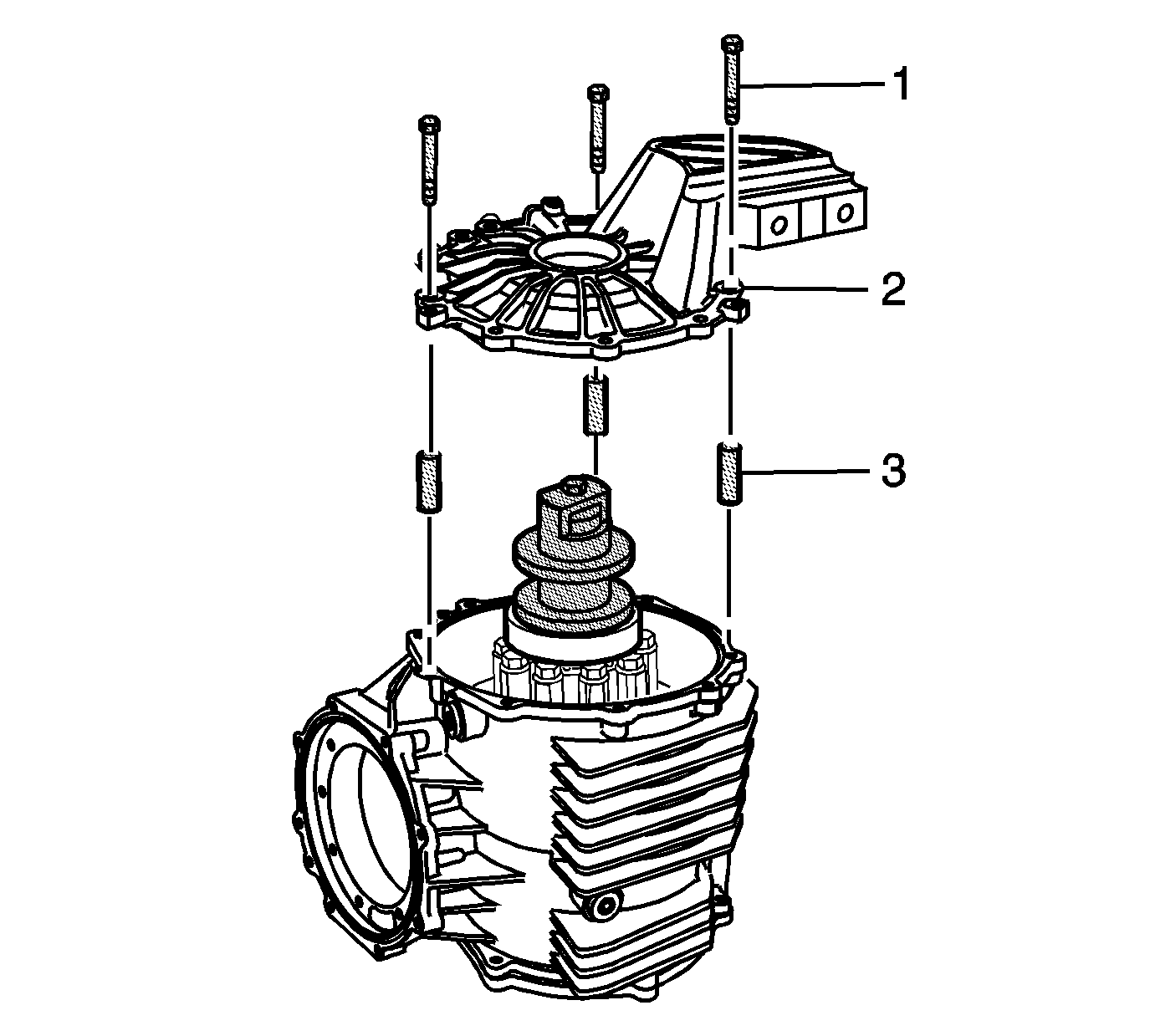
Important: In order to perform the shim selection procedure:
| • | The oil seal must be removed from the right cover. |
| • | The pinion housing/cage must NOT be installed to the differential case. |
- Install the right cover (2) and
J 42168-16
bolts (1) and spacers (3) to the differential. Position the
J 42168-16
bolts and
spacers evenly apart.
Tighten
Tighten the bolts to 30 N·m (22 lb ft).
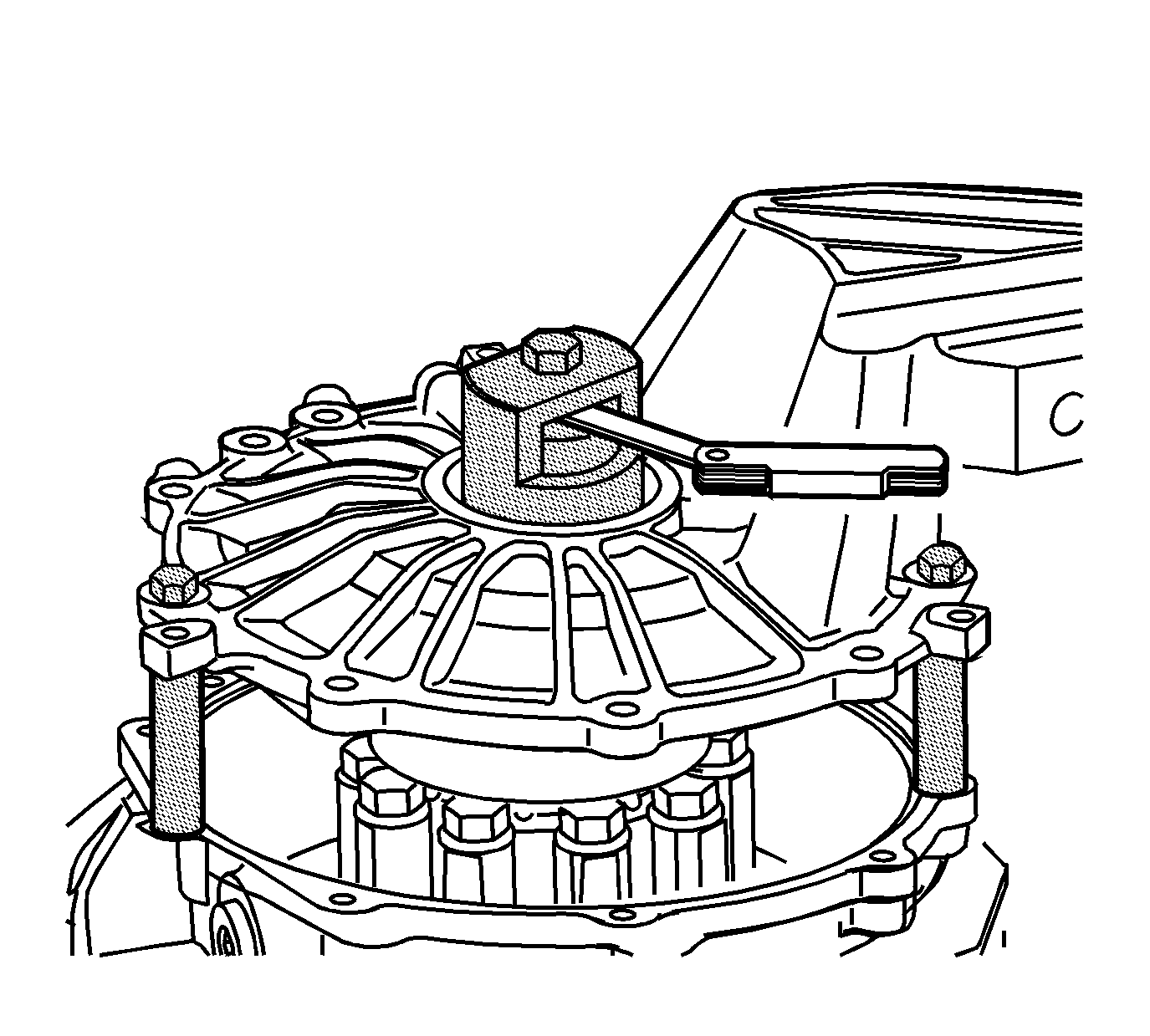
- Insert a feeler gage into the
J 42168-15
and measure the gap. The measured dimension is the right side differential bearing shim size.

- Remove the bolts (1), cover (2), and tools.
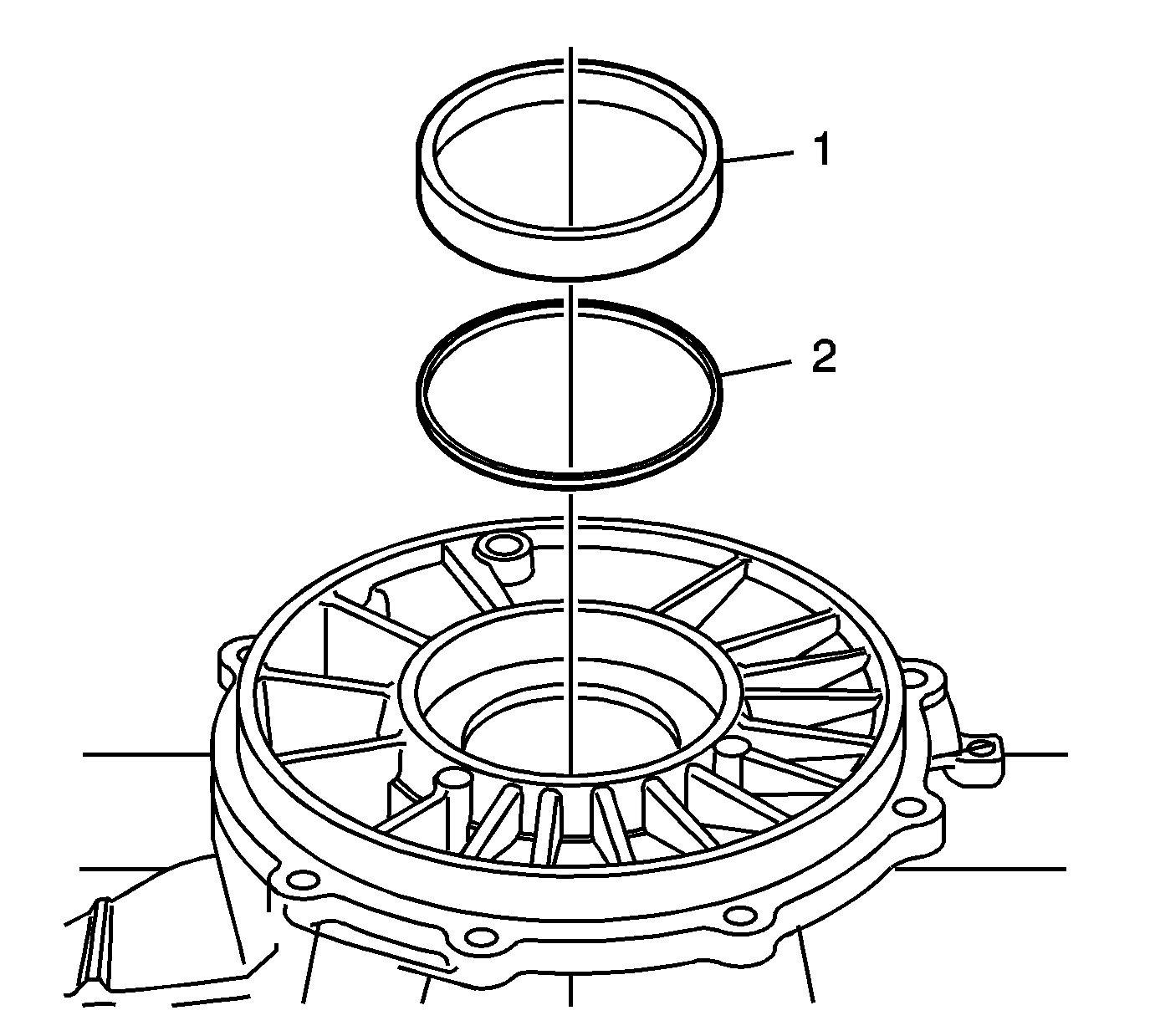
- Install the selected shim (2) and bearing cup (1) to the right cover.
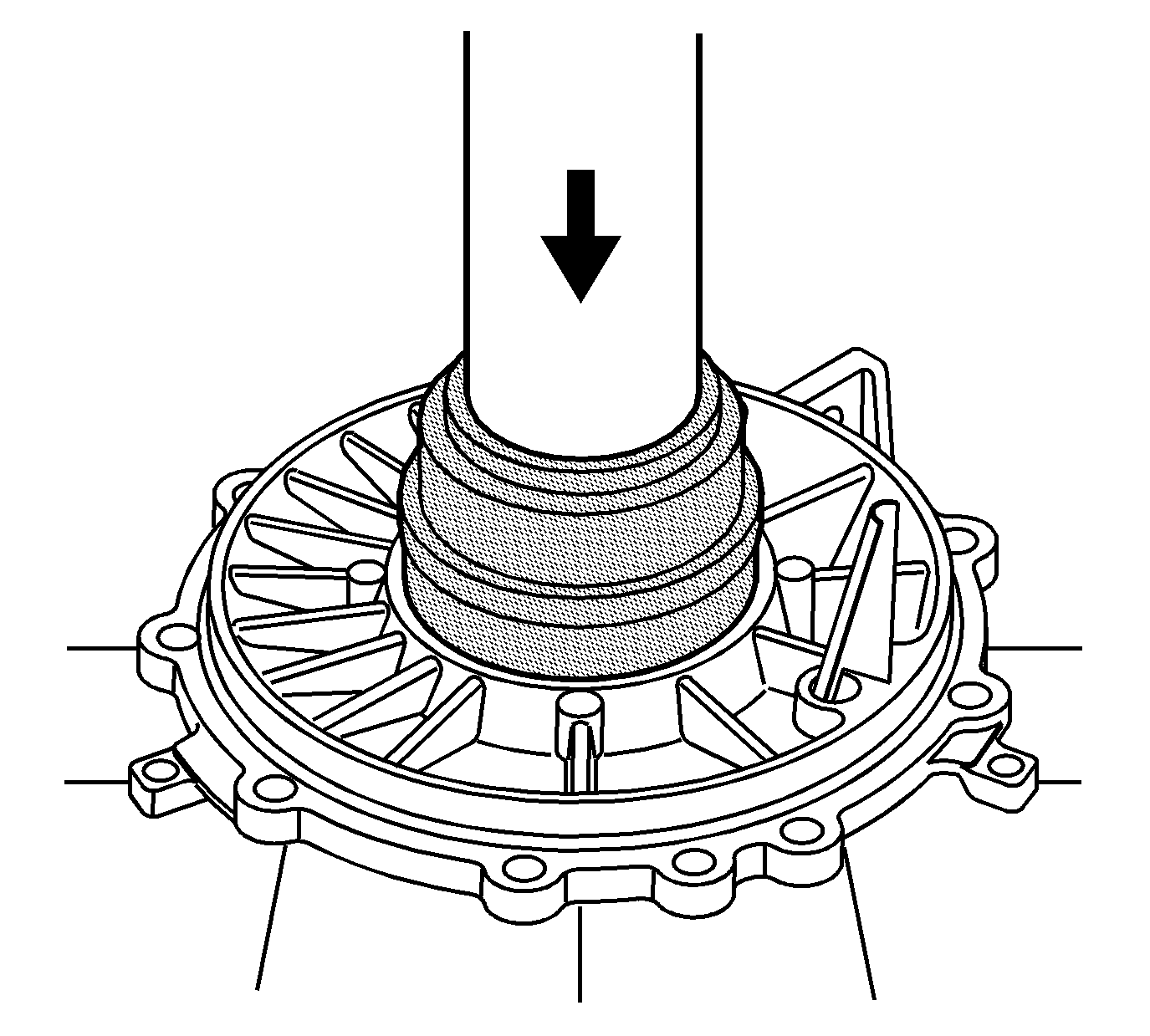
- Using the
J 42170
and a hydraulic
press, install the shim or shims and bearing cup into the right cover. Refer to
Rear Axle Assemble
.


















